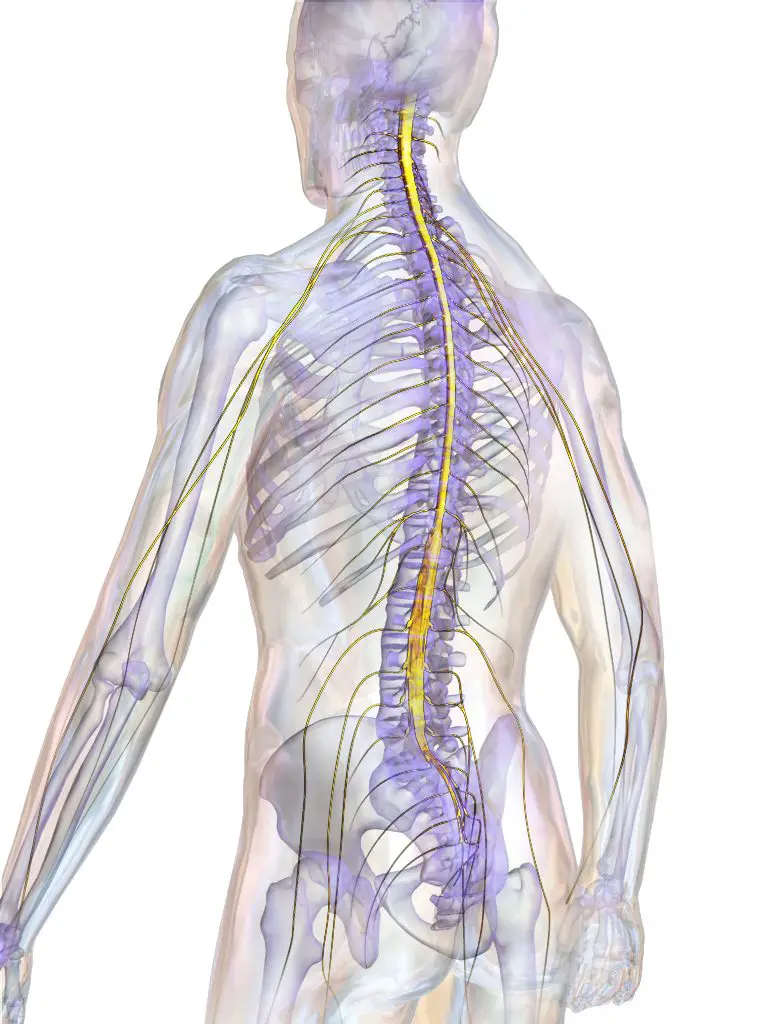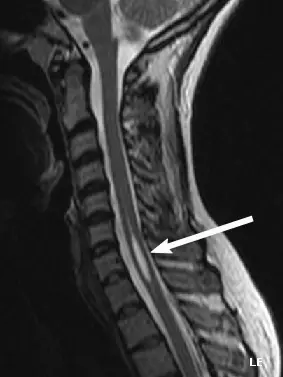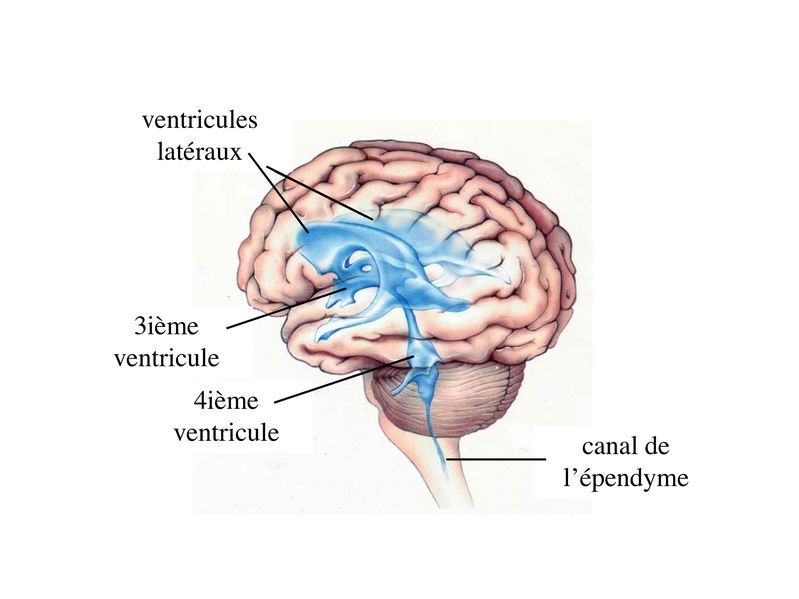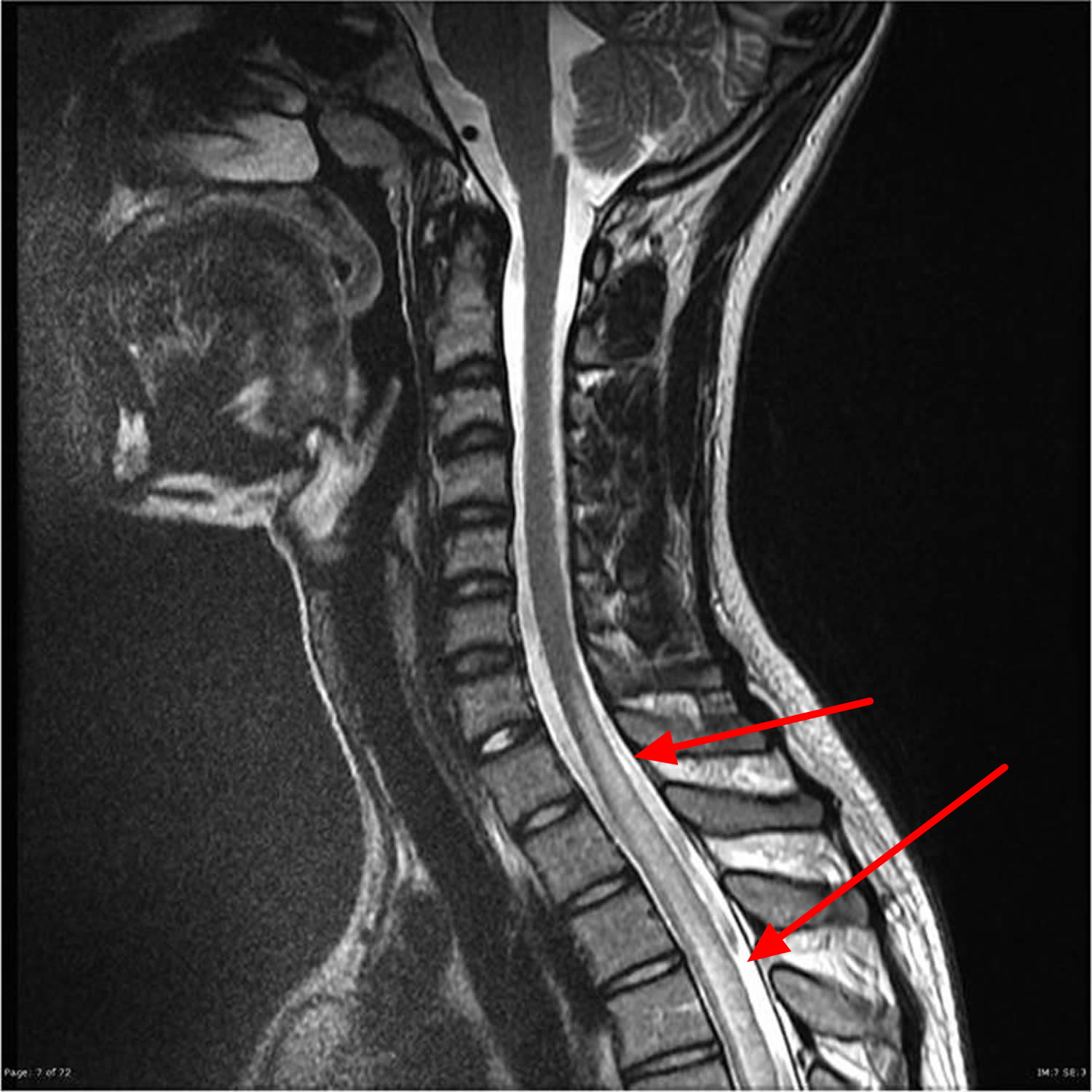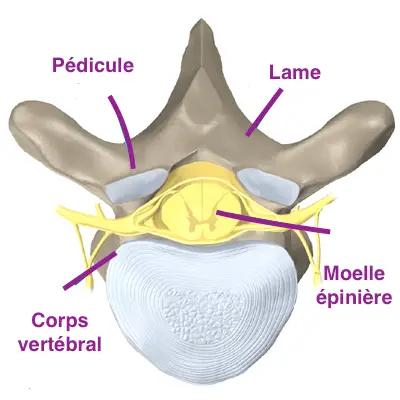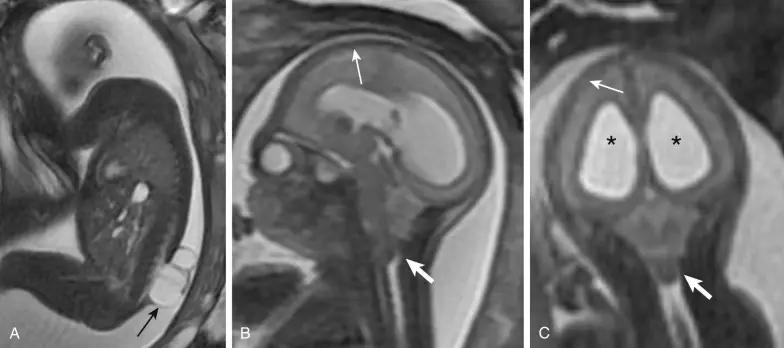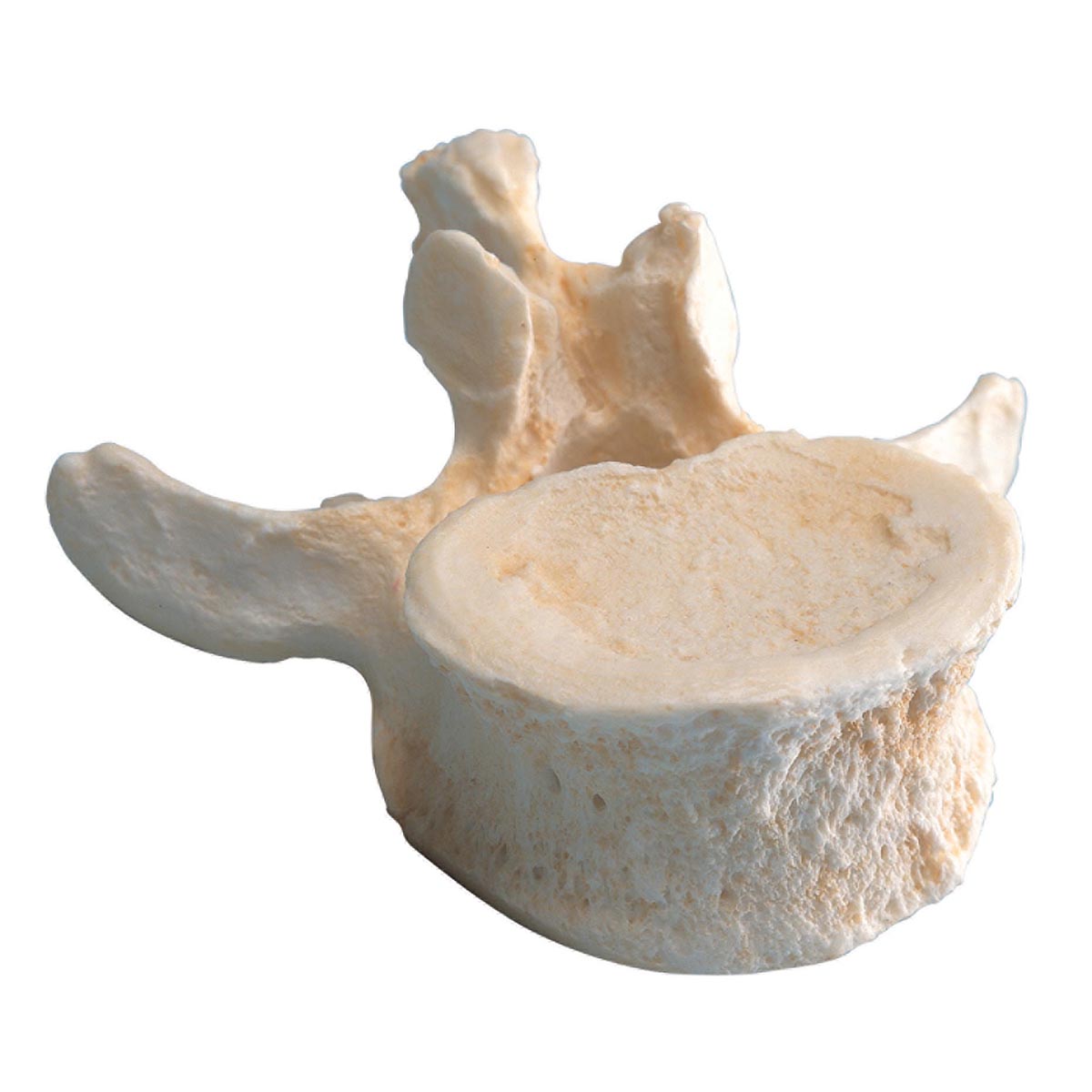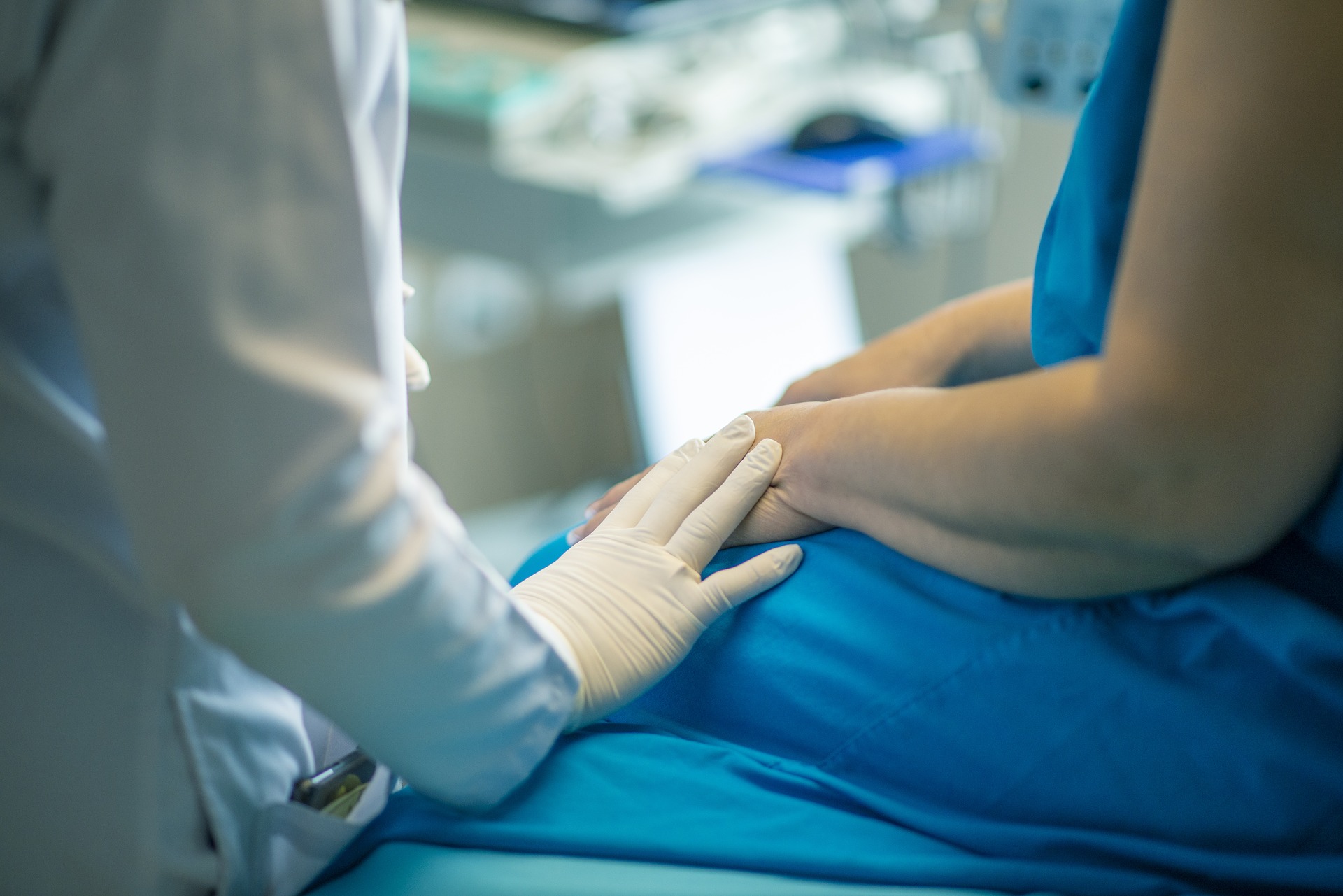Article reviewed and approved by Dr. Ibtissama Boukas, physician specializing in family medicine
An important part of the central nervous system, the spinal cord ensures the transport of nerve signals from the brain to the different parts of the body and vice versa. It intervenes in the sensitivity and mobility of the body. Any damage to the marrow can thus affect many functions within the body. To better understand this structure, we will see in this article its anatomy, its mode of operation, the various disorders that can affect it as well as their management.
Definition and anatomy
What is the spinal cord?
The spinal cord is one of the main parts of the nervous system. It comes in the form of a cylindrical structure which crosses the center of the spine, from the brainstem to the lower back. Made up of nerve bundles and cells, its role is to transmit messages from the brain to the rest of the body.
These nerve messages have three crucial functions.
- They control the movements and functions of the body. They also direct autonomic (involuntary) functions such as your respiratory rate and heart rate, as well as bowel and bladder function.
- They connect the organ of touch to the brain. Signals from various parts of your body allow the brain torecord and process touch-related sensations such as pressure, pain and temperature.
- They manage reflexes. The spinal cord controls certain reflexes (involuntary movements) without involving the brain.
Understand the structure of the spinal cord
La spinal cord starts in the lower part of your brainstem, called medulla oblongata. It then extends down the back inside the spine. Its termination forms a cone called conus medulla.
Like the brain, layers of tissue called brain cover the spinal cord. These protective tissues consist of:
- la dura mater : the outer layer that protects the spinal cord from injury;
- the material arachnoid: the intermediate layer between the epidural and subarachnoid space;
- la pia mater : the inner layer that covers your spinal cord.
It exists 31 pairs of nerves and nerve roots in the spinal cord. These include:
- 8 pairs of cervical nerves (nerves starting from the neck and going mainly to the face and head);
- 12 pairs of thoracic nerves (upper body nerves that extend to the chest, upper back and abdomen);
- 5 pairs of lumbar nerves (nerves in the lower back that go to the legs and feet);
- 5 pairs of sacral nerves (lower back nerves extending into the pelvis).
Apart from the first spinal nerve, each spinal nerve has two nerve roots: a motor or anterior root and a sensory or posterior root.
Each spinal nerve originates at a vertebrate specific and innervates a precise part within the organism. This area is called a dermatome. Thus, the entire skin surface of the body is then divided into several dermatomes.
What conditions and disorders affect the spinal cord?
Many disorders or injuries can affect the spinal cord. However, the lesions and pathologies that affect this structure are for the most part quite serious. They can cause major dysfunctions in all the organs. They can also because of limb paralysis.
La myelopathy is a generic term used to describe everything neurological deficit related to the spinal cord. It is usually due to compression of the spinal cord by an osteophyte or a extruded disc. Most often, this condition is located in the cervical spine, but it can also occur in the column thoracic ou lumbar.
Common conditions that can affect the spinal cord also include:
Acute transverse myelitis
It is an inflammation in one or more segments of the spinal cord.
Cervical spondylosis
This is a progressive wear of the intervertebral discs of the neck (cervical discs) which can put pressure on the spinal cord (myelopathy cervical).
The herniated discs
It is a slippage of the gelatinous nucleus of the intervertebral disc out of place, in some situations creating compression of the spinal cord and surrounding nerves.
The broken bones of the spine
A fracture occurs when one or more vertebrae are overwritten (compression fracture) or broken (burst fracture) following a trauma. The fragments sometimes put pressure on the spinal cord.
spinal muscular atrophy
It is a degeneration of motor nerve cells in the spinal cord causing muscle weakness and atrophy (wasting away).
Vertebral stenosis (narrow lumbar canal)
This is a narrowing of the spine that sometimes results in pinched nerves and irritation of the spinal cord.
Spinal tumors
These are cancerous or non-cancerous (benign) growths that grow in your spine or directly on the spinal cord (spinal cord cancer), and which exert a more or less significant pressure on it.
Spinal infections
An infection can occur when pressure from an expanding abscess or collapse of an infected vertebra or disc (spondylodiscitis) exerts pressure on the spinal cord.
Diagnosis of spinal cord disorders
Un physical examination and neurological meticulously as well as medical history review, constitute the first stage of diagnosis of a disorder within the spinal cord.
The diagnosis of myelopathy depends on the neurological location in the spine. The presence or absence of significant pain or trauma and the mode of onset are paramount to assess myelopathy into clinical categories.
Other diagnostic tests your doctor may recommend include:
- x-rays: to look for fractures or tumours;
- an MRI or computed tomography of the spine: to show areas of pressure on the spinal canal;
- myelography : to determine the location and presence of spinal cord abnormalities;
- an electromyogram: to determine the exact nerve root involved.
How to treat spinal cord disorders?
Le treatment of spinal cord disorders depends on the location and severity of the disease. For some, the consequences may be irreversible, but treatment is always put in place to prevent further complications.
Le traitement generally aims to reduce pain and above all, to improve the patient's functional abilities in their normal daily activities. Most of the time, this is done through non-surgical approaches.
When myelopathy symptoms persist or worsen despite medication and physical therapy, your healthcare professional may suggest surgery.
Le treatment of spinal cord disorders may include:
- etiological treatment: treatment of the underlying cause of the condition;
- medical treatment;
- rehabilitation through physiotherapy and occupational therapy;
- surgery if necessary.
At the same time, there is also the care of the other problems that accompany spinal cord disorders, namely:
- bowel and bladder dysfunction;
- pain ;
- muscle spasticity: involuntary stiffness and contracture of the muscles;
- blood circulation problems: formation of blood clots;
- breathing difficulties;
- urinary tract infections;
- bedsore formations…

